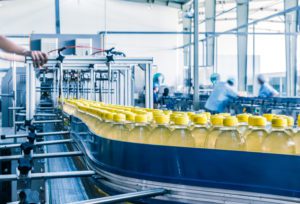Empowering Employees During COVID-19 with Connected Worker Technology
A version of this article was originally published in Consumer Goods Technology
Four months ago, masks, hand sanitizer and toilet paper were not likely at the top of anyone’s shopping list — fast-forward to today, and the pandemic and the subsequent surge in demand of certain product categories have shifted shopping list priorities.
As a result, many consumer goods companies ramped up their production cycles, especially in the food, beverage and personal hygiene industries, to meet unprecedented need. Even companies outside of that space have shifted gears to produce necessities beyond their core product lines. For example, L’Oreal and premium wine and spirits leader Pernod Ricard are two examples of companies that converted their facilities to make hand sanitizer.
The New, Post-COVID-19 Way of Working
As other facilities that previously had to close due to COVID-19 — including numerous food and beverage processing and manufacturing plants — begin to re-open, they face a new challenge of figuring out how to safely bring employees back to the assembly line.
For consumer goods manufacturers, this pandemic has brought two critical considerations to the forefront: employees’ health and safety, and the need to capture tacit operational knowledge as frontline workers’ responsibilities change.
In times like these, how do companies quickly roll out new procedures and safety standards across shifts and sites, validate that workers are executing them correctly, and be able to make further changes on a dime?
This is where digital work instructions and procedures that can be updated in real-time, with in-the-moment training and health, hygiene and social-distancing checks integrated into the procedures themselves, can help.
Connecting Workers to People, Information, Systems & Machines
Called connected worker technology, these types of modern, digital tools allow employees to connect with each other and to the information, systems and machines they need to improve safety, quality and productivity as they perform their work.
As consumer goods companies and operations recover from the pandemic and rebuild, connected worker technology can support safety at scale. It can add safety measures directly into standard operating procedures, like reminders to wash hands, wear a mask or take a temperature.
It can ensure that shift handoffs on the factory floor are done with social distancing in mind: By tracking the real-time activity and progress level of tasks and procedures performed by workers, it can decrease and even eliminate the need for shift leaders and teams to talk face to face.
For consumer goods companies experiencing a surge in demand, connected worker technology can guide workers to perform their tasks accurately and efficiently, help them collaborate better with their peers, and give management insight into roadblocks or areas for improvements within processes. This helps companies ramp up production with less human error and empowers their workers to perform to the best of their abilities and strengths.
As we hopefully emerge from this pandemic, protecting the health and safety of industrial workers — and ensuring the quality of the products they produce — is now more acute than ever before. Connected worker technology empowers those on the industry front lines with both the tools and the peace of mind to get their jobs done as safely and efficiently as possible.





